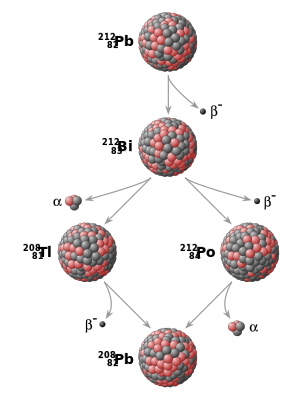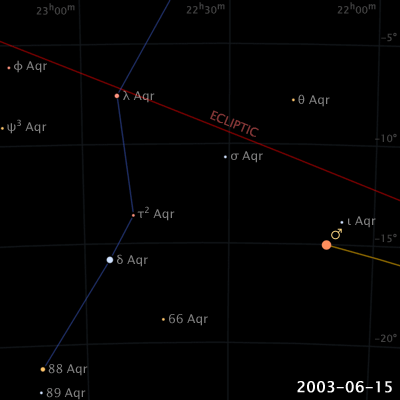Of Decay Products and Retrograde Motion
Sep 01 2008 Mon
11:19 pm PHT
Remember the Wikimedia illustration-for-pay project I blogged about last year? Hmmm, maybe not. (So read that blog post! Go on. I’ll wait.) anyway, the first round of illustration requests started last month and will run until early October. There are 50 needed illustrations in various fields such as biology (jellyfish cross-section), mathematics (Császár polyhedron), engineering (airborne wind turbine), and computer science (application virtualization). All but two of the illustrations will have a payout of $40 while the remaining will be worth $15.
As I said in my previous blog entry, I have mixed feelings about the whole project, but I am supporting it. Anyway, I spent the past two weekends creating two of the requested illustrations. The first request is for an illustration of a radioactive decay product and the second is for an animation of a planet’s apparent retrograde motion. Shown below are the illustrations I created linked to their Wikimedia Commons pages.
The decay product illustration took me about five hours to create: about half of that to draw the initial image in a popular vector-graphics application and the rest in developing and running scripts to fix and optimize the resulting SVG and then finalizing the image in Inkscape. All in all, I was pretty satisfied with my output.
The animation, on the other hand, was quite hairy to create and took me eight hours. The initial phase involved taking periodic screenshots in Stellarium, an open-source planetarium software, and tracing over the series of shots later on. The key problem of the whole process is that Mars’ path needs to be progressively drawn in, and the date caption in the bottom-right corner needs to be updated every frame. What I ended up with is creating 79 layers in a popular raster-image application, each depicting a different date, and using three separate paths of Mars path with judicious use of moving masks. Rendering the GIF image maxed out my laptop’s resources and I had to kill some background memory processes to get me some more memory. But the final image is worth it and I think it’s quite pretty if I say so myself.
The images are now in the review phase and hopefully only little tweaking is needed if changes are necessary. Well I certainly hope that the animation is more or less sufficient since I don’t particularly relish the thought of going through the whole rendering process again.
So, is this the future of Wikipedia? Do we have to pay people to contribute content? Personally, I would still contribute images to Wikipedia like the set of maps of Dinagat Islands I did earlier this year without getting any compensation in return. There’s something fulfilling about contributing to the world’s largest collaborative information project in history. But truth be told, I would not create the images above if there wasn’t any monetary reward involved. So I guess my own answer is that some sort of compensation is needed in Wikipedia, but only for content and/or processes that very few people would do otherwise. We can continue to expect that people will contribute out of their own good will, but to build quality in less-popular areas, much more motivation is needed.




Comments
Comments are currently disabled.